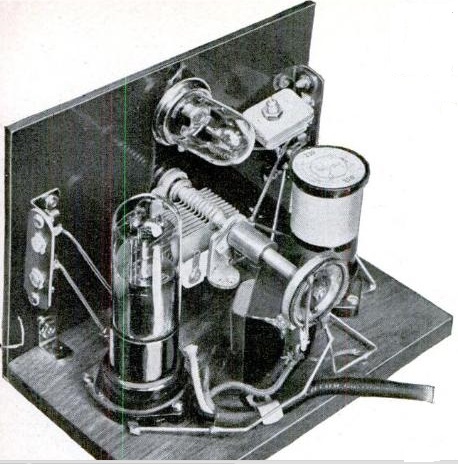 Seventy-five years ago, the August 1940 edition of Popular Science provided an admittedly ingenious solution to a nonexistent problem, in the form of this one-control radio. The set is a rather unremarkable crystal detector followed by a one-tube audio amplifier. In other words, it will pull in about as many stations as any other crystal set, only louder.
Seventy-five years ago, the August 1940 edition of Popular Science provided an admittedly ingenious solution to a nonexistent problem, in the form of this one-control radio. The set is a rather unremarkable crystal detector followed by a one-tube audio amplifier. In other words, it will pull in about as many stations as any other crystal set, only louder.
The gimmick is that the set has but one control, a tuning knob combined with an on-off switch. In other words, instead of turning the set off by clicking the volume control (which it doesn’t have), you turn it off by rotating the tuning control to the bottom of the dial.
This was accomplished by coupling the shaft of the variable condenser to a rheostat. Before doing so, you flow solder over the windings of the rheostat, turning it into an on-off switch.
I suppose this adds a certain level of convenience. But whatever seconds are gained by not having to disconnect the battery are lost by the set’s having three separate antenna connections. One connection is for maximum selectivity, another is for maximum sensitivity at the expense of selectivity, and a third is for use with a short antenna. The antenna switching is done not with a switch, but by manually moving the antenna to a different connector.
Still, it’s an attractive little minimalist set.
Click Here For Today’s Ripley’s Believe It Or Not Cartoon ![]()
